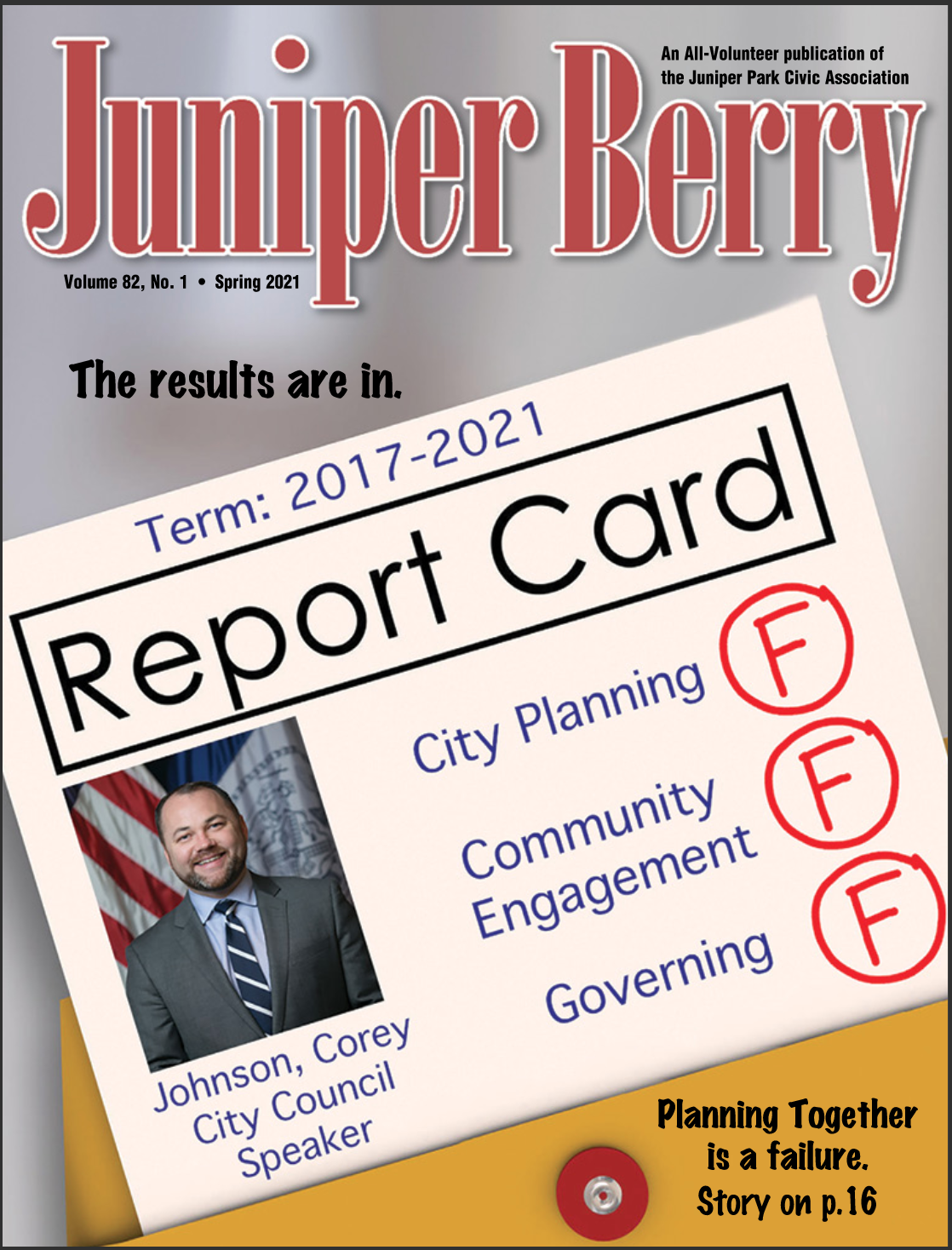I grew up in Middle Village, Queens; a more appropriate name would have been Little Village. My parents, together with their first-born child, my sister Frieda, who was born on January 16, 1918, moved to Middle Village in 1919. They shared a small two-family house on Pulaski Street. The streets were not paved and there were no sidewalks or sewers. Each house had a cesspool in the backyard that had to be cleaned out several times a year. Each house had coal burning heat. The heat came into a few of the rooms through a small vent on the floor, on which you leaned over to feel some heat, which was next to worthless. There was no such thing as a washing machine or dryer. Laundry was washed by hand in a sink in the basement, and put out to dry on a clothesline that extended from the kitchen window to a tree in the backyard. When doing so in the winter, the clothes were brought in frozen stiff. One good thing about the winter was a box attached to the outside back wall in which perishables could be placed since the small ice box in the kitchen could hold very few items. I had an aunt and uncle who also lived in the neighborhood. It was comforting to know I could never be abandoned.
Middle Village at the time was surrounded by several farms. One of the farms was Lacktor’s dairy. When I was in Mrs. Brown’s kindergarten class in P. S. 87, I recall being taken to that farm to watch the cows being milked. Before we left, the class was lined up at the front entrance to the school and a photograph taken. I attach a copy of the photograph, and I can still name a number of the children, including George Lacktor whose grandfather owned the farm.
Middle Village was split in two, separated by Metropolitan Avenue. I lived on the south side which extended to Cooper Avenue in Glendale and consisted of about ten square blocks. On the north side was Juniper Valley which I think extended to Eliot Avenue. The residents of the area where I lived were Italians, Jews, Irish, Germans and a few Scandinavians, most parents having been immigrants, their children first generation Americans. We all went to P.S. 87. There were no fights and we got along with each other. In addition to Pulaski Street, there were streets named Steuben, Wayne and Memorial all having reference to the American Revolutionary era. Our parents were not aware of that fact until we told them.
When my mother moved into our house, I recall she told me her neighbors at that time were a German family named Walters. Like herself, Mrs. Walters also had many children. Momma said when the weather was warm, she would sit on the front porch with her newborn child, as did Mrs. Walters with her child. They would chat with each other and at the same time nurse their infants.
There currently exists in the Juniper side of Middle Village, Juniper Valley Park. Before it became a park, the area consisted of empty plots. There was a racketeer gambler named Arnold Rothstein who was known as the fixer of the 1919 Black Sox baseball series (“Say it ain’t so, Joe“) and had also been married to the Broadway star Fanny Brice. Rothstein owned the empty plots and rumor had it he buried money there. When I was about ten years old, my friends and I would go the plots and dig hoping to find money. Of course, we found nothing because money had never been buried there. At some point Rothstein decided to construct houses on the plots but failed to do because the earth was not able to handle the weight. He ended his connection when the plots were forfeited to the City. The City determined the earth was in fact sod which it sold for a good deal of money. When all is said and done, there was no money in the plots, there was sod and no houses. What exists in their place is a beautiful neighborhood park, perhaps the most beautiful in our city.
When I think of Middle Village, it is a memory of how fortunate I was to have lived and grown up there. While I am currently 92 years old, I live not far from Middle Village. I go there frequently because there is a bakery on Metropolitan Avenue that makes good bread and while there, I do pass the house on Pulaski Street, now called 68th Avenue, in which my sister, two brothers and I were born. I cannot think of a single negative thing about growing up in Middle Village, or about anybody who lived there. My family and most of the others who lived there, and particularly during the terrible 1930s Depression had very little material possessions, but it was the memory of “Little Village” that made us wealthy.




